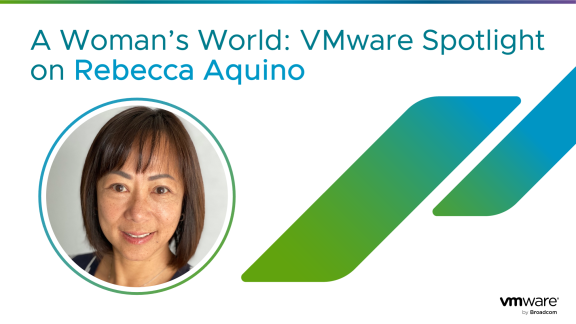What makes a networking and security platform modern? Today’s organizations need a platform that integrates solutions to meet common standards, provides end-to-end coverage, and allows flexibility and interconnectivity while securing hybrid and evolving environments.
Implementing a modern networking and security platform can help organizations support critical business processes and applications to better protect their valuable data and ensure the continued availability and performance of their network infrastructure.
Why implement a modern networking and security platform?
Keep reading to learn 20 reasons to implement a flexible and scalable, software-centric modern networking and security platform (MNSP) and important aspects to consider.
- Address evolving business needs – Companies need agility, flexibility, and visibility to innovate quickly and require a networking and security approach that legacy solutions simply cannot provide. An MNSP can enable this while still maintaining high-level networking and security standards.
- Gain cost efficiencies – Legacy network and security solutions require expensive proprietary hardware and licensing models. AN MNSP running on commodity hardware reduces costs through virtualization and cloud technologies and focuses on lowering IT CapEx and OpEx.
- Anticipate advanced threats – With the increasing number and sophistication of security threats, organizations need an MNSP to secure application traffic within and across clouds to prevent and mitigate ransomware attacks.
- Support cloud-based application adoption – As organizations move more of their apps and workloads to hybrid and multi-cloud environments, they need an MNSP that can support cloud-based applications and services and provide secure remote access.
- Reinforce application security – These initiatives involve the adoption of technologies such as containers, microservices, and DevOps practices. Secure API (Application Programming Interface) communications using WAF (Web Application Firewall), micro-segmentation, threat detection, data security, and service identity management for multi-cloud are required. An MNSP to ensure that these technologies are deployed securely and effectively needs to be considered.
- Meet regulatory compliance requirements – Many industries are subject to regulatory requirements that mandate specific security and data protection measures. An MNSP can help organizations comply with these requirements and avoid costly fines and reputational damage.
- Improve Security Operations Center (SOC) efficiency – As networks become more complex, organizations need an MNSP that can simplify network management and provide greater visibility into network activity. This can help organizations identify and respond to security threats more quickly and effectively.
- Optimize network performance – A software-defined approach to networking that extends across data centers, clouds, edge, and application frameworks is essential. The MNSP should bring networking and security closer to applications, providing easy scalability and agility to optimize network performance.
- Provide self-service services on-demand – The MNSP should allow organizations to create multiple networking and security services with automation using APIs (Application Programming Interface) that can be provisioned in seconds and managed independently of underlying hardware.
- Create consistent networking and security policies – A unified MNSP to manage security policies and access is necessary to ensure consistent policy, networking, and tooling across all environments. The deployment and configuration of network services should be templatized and applied consistently across all environments.
- Develop more efficient operations and deployment– The MNSP should provide simple operations and faster deployment. The platform should allow for launching workloads, making configuration changes to the network, and deploying applications instantly in contrast to legacy platforms that could take weeks or months to accomplish the same tasks.
- Provide advanced networking and security services for multiple sites – The MNSP should be able to provide advanced networking and security services with traffic flow visibility and integration to operations for organizations with multiple sites. Segmentation, intrusion detection and prevention, advanced threat prevention features, and advanced analytics are desired.
- Produce public cloud-like experience on premises – The MNSP should provide a high level of automation for networking and security services. Users should be able to access these resources and scale their use up or down at any time. Services should be available on demand.
- Optimize and secure access to applications and data – The MNSP should provide optimized and secure access to the application for remote and mobile users. Centralized Network Security Management, Secure Access Service Edge (SASE), Next Generation Firewall, and Intelligent Edges that provide real-time analytics need to be part of the solution to ensure service levels are met and secured with industry-leading WAN (Wide Area Network) technologies.
- Align to cybersecurity industry frameworks – It’s essential to ensure that an organization’s network infrastructure is secure and resilient. Aligning a cybersecurity framework like NIST (National Institute of Standards and Technology) to the MNSP includes activities like identification of critical assets and systems, risk assessments, developing and testing security controls, and monitoring and maintaining security controls.
- Deploy advanced load balancing and WAF – The MNSP should provide hyper-efficient load balancing to route requests to the resource best able to service them in that instant and to spin up new resources when demand requires it, ensuring fast and secure application delivery in a multi-cloud environment that includes virtual machines, containers, and public and private clouds.
- Optimize existing network infrastructure footprint – The MNSP should be able to minimize the existing network infrastructure footprint to help reduce energy consumption. Virtualizing network infrastructure and leveraging cloud-based infrastructure should not be complex.
- Implement platform integration capabilities – The MNSP can be integrated with existing infrastructure, including legacy systems, as well as new technologies such as cloud services and container orchestration platforms. A strong, rich ecosystem of out-of-the-box integration will allow fast integration and deployment.
- Design an effective unified platform – The MNSP should provide a comprehensive integrated portfolio of products and services for protecting environments, users, applications, and endpoints. An effective, unified networking and security platform can help simplify network management, reduce costs, and improve security.
- Maintain high availability and business continuity – High availability and resilience to ensure that network and security services are always available must be provided by the MNSP along with disaster recovery capabilities. It will allow protection against data loss and minimize the impact of disruptions.
Implementing a modern networking and security platform helps to protect your organization against cyber threats and creates a more resilient technology ecosystem.
Learn more about networking and security
For more about building a secure platform to protect your data and reputation, read our tips for improving network security, deploying load balancers, and securing APIs. Contact us if you’d like help from VMware Professional Services for Networking to evolve and optimize your network, and read more about VMware network security solutions.






